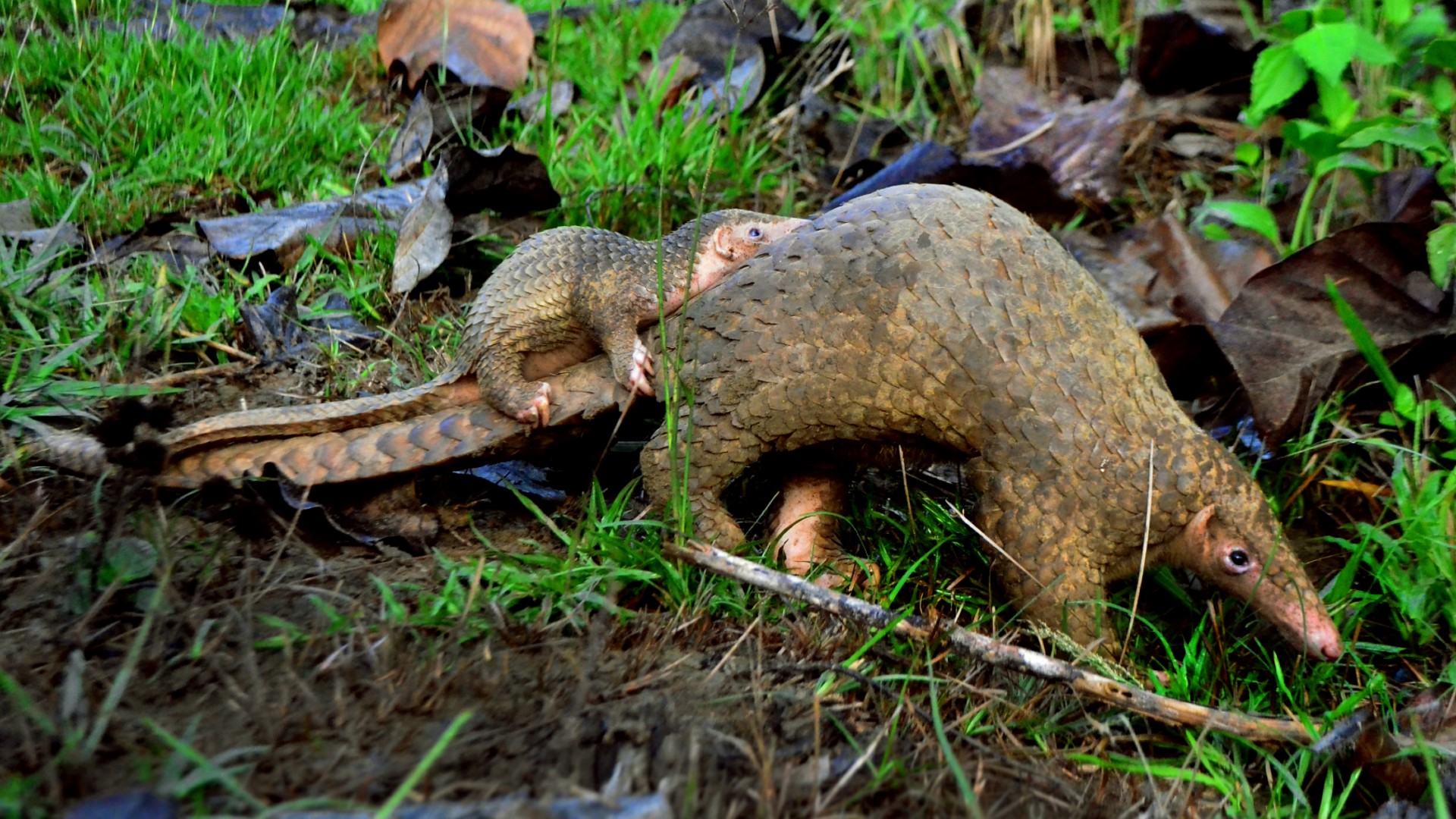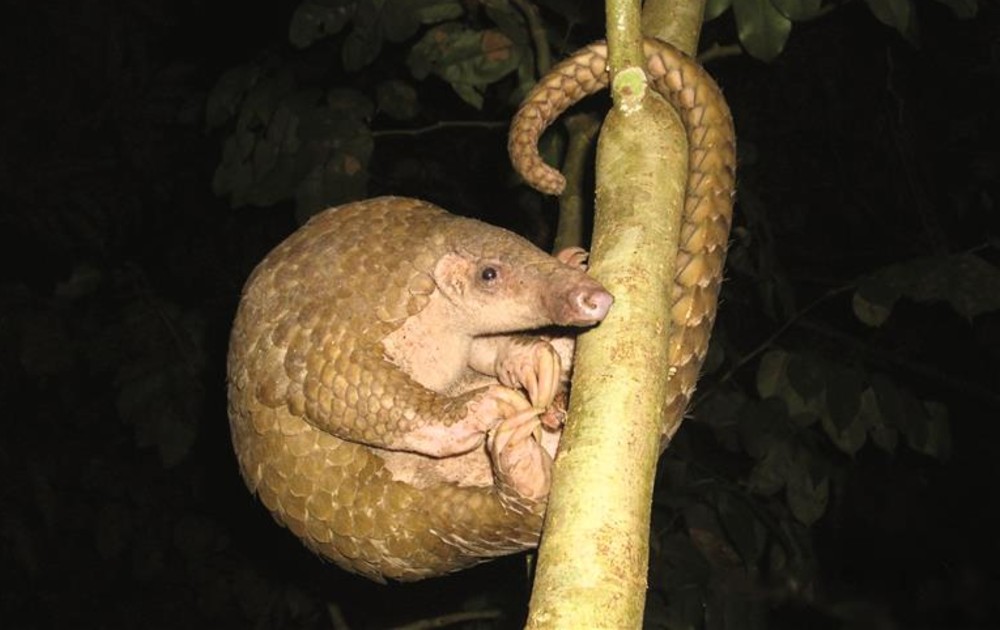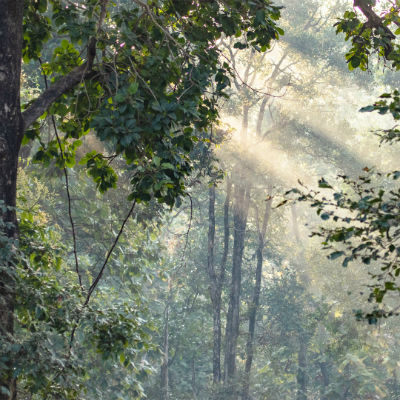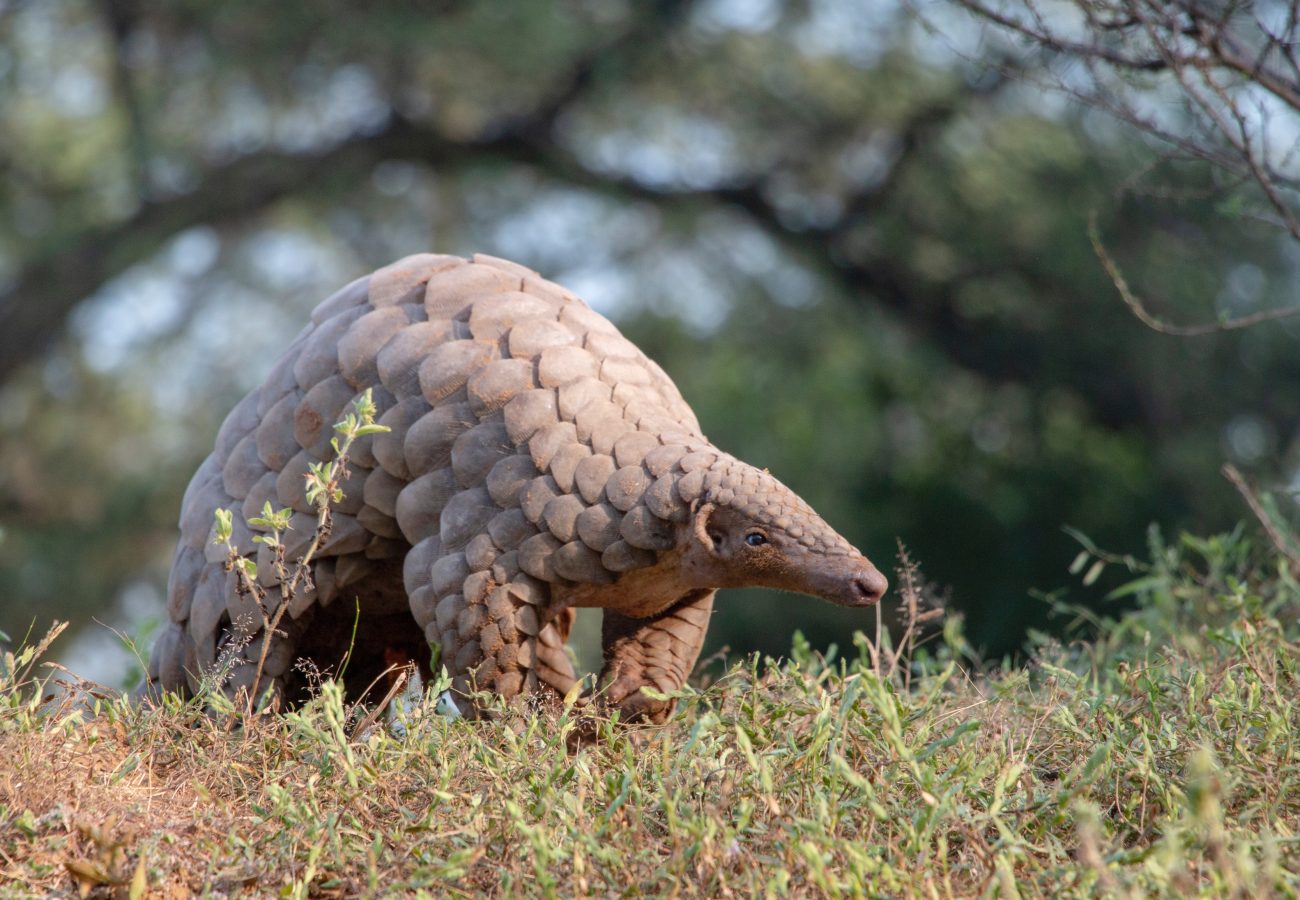
SCIENTIFIC NAME
Manis culionensis

Manis culionensis
It is the only pangolin in the Philippines and is classed as Critically Endangered by the IUCN. Hunting and poaching threaten Philippine pangolin populations, along with habitat loss.

Manis culionensis

Critically Endangered

130cm in length

4-7 kg

Carnivorous/insectivorous (feeding on ants and termites)

Forested areas and grasslands

Endemic to the Province of Palawan, Philippines

Unknown, declining

Hunting, poaching, illegal wildlife trade, habitat loss

It was only in 2005 that Philippine pangolins were recognised as a distinct species. They were previously thought to be Sunda pangolins.
Pangolins are covered in scales across their body which are made of keratin, the same substance as our fingernails.
Like other Asian pangolins, the Philippine pangolin have hair growing between their scales. Compared with Sunda pangolins, Philippine pangolins have smaller scales, and a shorter body to tail length ratio.
Pangolins are the only mammals covered in overlapping scales. These scales act as a form of armour and help protect pangolins from predators. Philippine pangolins have the most rows of scales across their back of all the Asian pangolins.

Philippine Pangolin (c) Dexter Alvarado, Katala Foundation, flickr creative commons
Philippine pangolins are endemic to the Philippines. This means that they only live in the Philippines where they are found in the Province of Palawan. They have been recorded on mainland Palawan, the Calamian Islands and several other nearby smaller islands.
Philippine pangolins have the smallest range of all eight pangolin species.
Philippine pangolin habitat is mainly primary and secondary lowland forest, but they can also use a diverse range of habitats, such as grasslands, forest mosaics, coastal areas, and agricultural ecosystems.
Philippine pangolins are myrmecophagous, which means they eat almost exclusively ants and termites. Pangolins use their long sticky tongues to extract insects from nests and mounds.
Philippine pangolins are primarily nocturnal animals, that forage for food at night. Their activity pattern may be influenced by the lunar cycle, with one study finding that they were more active at dusk and early morning when the moon was bright while during the new moon period, a pangolin was active earlier in the day.
They are semi-arboreal (tree-living) and can rest during the day in burrows in the ground, in between large rocks or in tree hollows. Pangolins roll into a ball when threatened, using their scales as a shield.
Little is known about Philippine pangolin reproductive behaviour. It is thought they are likely to be similar to Sunda pangolins and give birth to one offspring after a gestation period of around 6 months.
Females reach maturity in their first year.
Hunting and the illegal trade in pangolin scales and body parts is the main threat to Philippine pangolin populations. They have been hunted historically at a local level for meat and traditional uses and in the 1970s-1990s they were heavily hunted for international trade.
This continues today but the full extent of the national and international trade in Philippine pangolins is unknown. Despite national legislation, Asian pangolins are still hunted for the illegal international wildlife trade.
Deforestation for agriculture, mining and infrastructure development has significantly impacted Philippine pangolin natural habitats. Mining is an increasingly growing threat to the forests in Palawan.
Pangolins are hunted locally for subsistence or a variety of medicinal and traditional uses but there is limited research into the frequency of hunting, and how this influences Philippine pangolin populations.


You can learn all about them by following the links below:

The Pangolin Family lives in Malawi, in southeast Africa. Pangolins are one of the most illegally traded mammal species. Lilongwe Wildlife Trust rescues pangolins who are injured, orphaned or confiscated from wildlife traffickers.
Your adoption will help Born Free care for pangolins rescued and rehabilitated by Lilongwe Wildlife Trust, and to monitor their progress once released back into the wild. In addition, your adoption will help to fund our work to campaign against the illegal wildlife trade and protect their natural habitat.